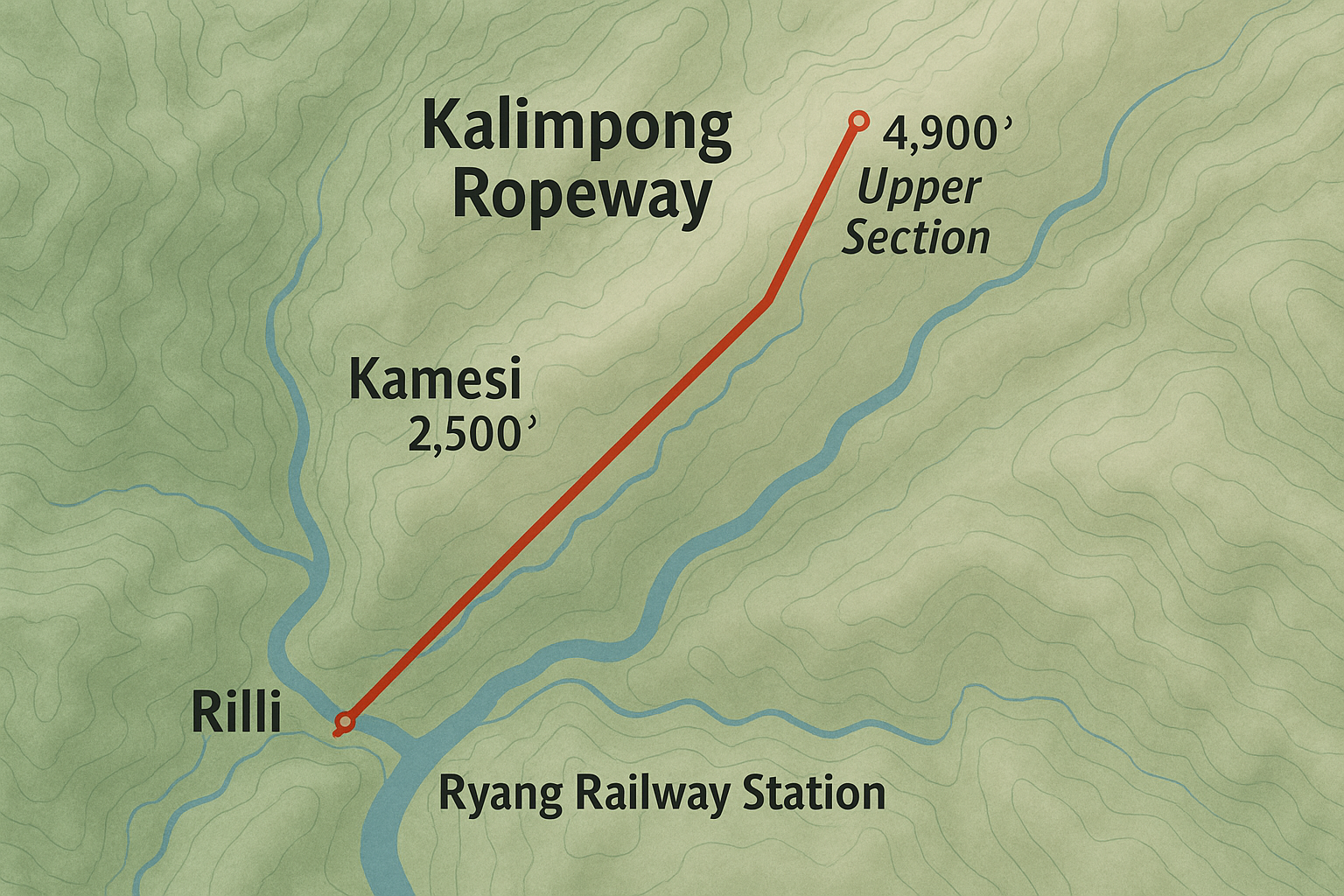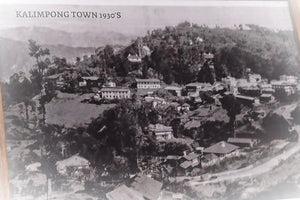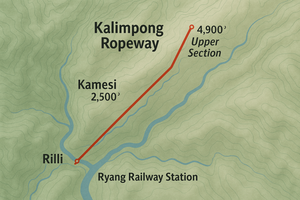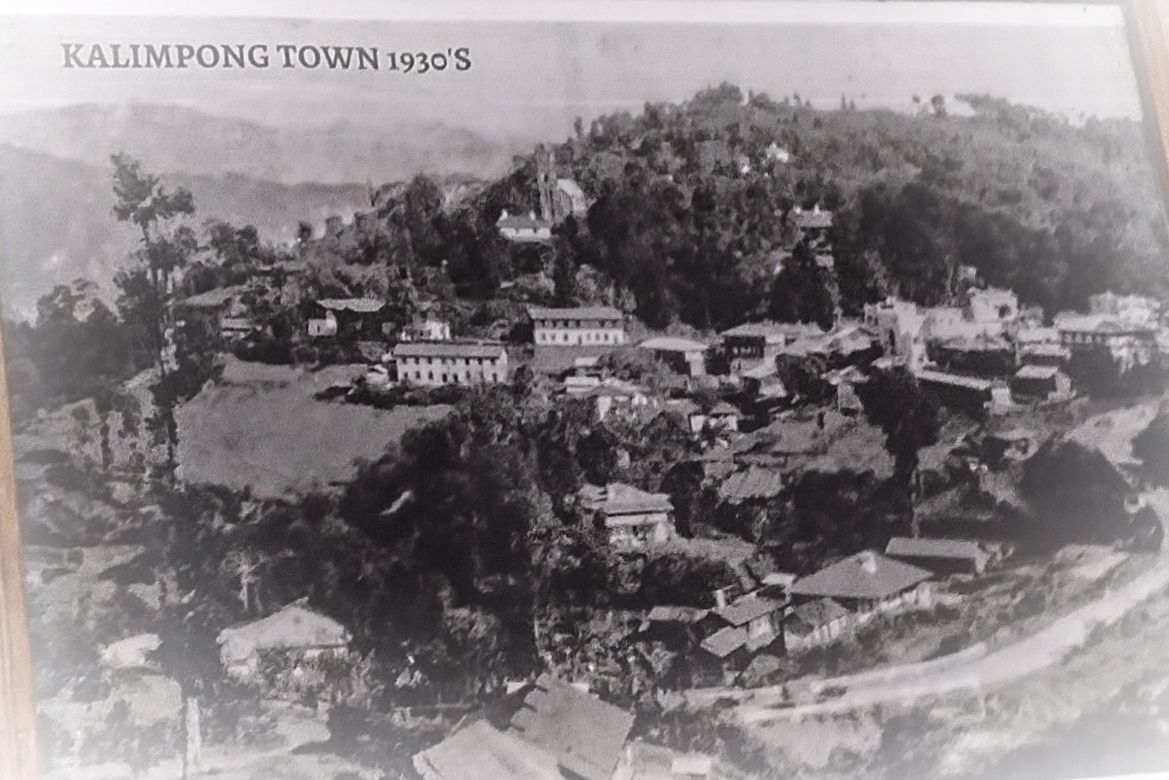
Long before modern highways and the seamless network of roads we travel on today, there existed a town nestled in the misty Eastern Himalayas that played a vital role in trade and transport—Kalimpong. This small, cloud-clad town in West Bengal, India, served as a crucial link between Tibet and the plains of Bengal. Its significance wasn’t just due to its location, but because of the essential route it provided for traders, monks, and travelers passing through its winding paths.
The Need for a Revolutionary Transport System
Kalimpong was an important stop for those crossing the Himalayan range. However, while its location was strategically advantageous, the journey to and from Kalimpong to the Teesta Valley was anything but easy. The 18-mile trek down to the valley was challenging—rough, uneven terrain that was difficult for both humans and animals alike. Ponies, laden with wool, furs, musk, and yak tails, would make their way through the rugged hills, but the journey was slow, exhausting, and, at times, dangerous.
This obstacle prompted a bold vision—a revolutionary solution that would forever change the way people thought about transportation in the mountains.
The Birth of the Kalimpong Ropeway
In 1928, a visionary idea took root: to build a ropeway that would float goods across the valleys and forests, bypassing the need for challenging terrain. But this was no simple cable line—it was a full-fledged mechanical marvel. The ropeway, built by the Kalimpong Ropeway Co. Ltd. with the backing of Gillanders Arbuthnot & Co., was a stunning feat of engineering. Designed to function as a “sky highway,” it would link Kalimpong to the surrounding valleys, offering a faster, more efficient way of moving goods.
Two Majestic Segments: From Kalimpong to the Clouds
The Kalimpong Ropeway wasn’t just an ordinary transportation system; it was a grand, ambitious project. The system consisted of two major parts:
-
Kalimpong to Kamesi – 23 Miles Across Ridges and Rivers The first segment of the ropeway was a remarkable 23-mile stretch, which glided over ridges, valleys, and rushing rivers. Powered by two massive 72-horsepower engines, this segment traversed some of the most challenging terrains in the region, providing a lifeline between Kalimpong and the surrounding areas. The heavy engines were designed to pull carrier trays filled with various goods, and every few minutes, a new tray would be clipped to the moving cable.
The items transported ranged from essential goods like timber and bales of wool to fruits like oranges, which were vital to the region's agricultural economy. These trays would make their way smoothly and silently across the mountains, their presence often a ghostly silhouette in the mist, as they carried the lifeblood of the hill trade.
-
Kamesi to Rilli – 4.5 Miles of Gentle Glide The second segment of the ropeway extended from Kamesi to Rilli, near the Riyang Railway Station. This 4.5-mile stretch offered a scenic, tranquil glide through the valleys and forests. The gondolas here would carry goods to and from the railway station, seamlessly connecting Kalimpong’s isolated trade hubs with the larger network of transportation in the region. It wasn’t just a technical innovation—it was an engineering solution that merged functionality with the beauty of the Himalayan landscape.
Kalimpong Becomes a Trade Hub
In its prime, the Kalimpong Ropeway transformed the town into a bustling trade hub, far more connected and efficient than many other towns of its size. The ropeway allowed for quick, reliable transport of goods, cutting down the time needed to travel over rugged terrain. It played an integral part in Kalimpong’s economy, facilitating trade between India, Tibet, and neighboring regions.
The system was not just a marvel of engineering but also a key player in the economic growth of the area. While Kalimpong was already a well-known center for wool, tea, and agricultural products, the ropeway made it even more accessible to markets both in the foothills and on the plains. It was a vital piece of infrastructure that enhanced the trade, culture, and lifestyle of the Eastern Himalayas.
The Decline and Disappearance of the Ropeway
But as with all technological advancements, time marched on. The Kalimpong Ropeway, once hailed as a "wonder of modern engineering," slowly fell into disuse as the world changed around it. New roads and modern transportation methods replaced the need for such systems. Trucks began replacing the ponies that had once carried goods up and down the mountain, and smoother highways started linking Kalimpong to the larger network of trade routes. The ropeway, with its once-vibrant hum, became a relic of the past.
By the mid-20th century, the ropeway was no longer in operation. The engines went silent, the cables went slack, and the towers were left to rust in the jungle. Yet, even as nature began to reclaim its domain, the story of the ropeway faded from public memory, leaving only faint whispers in the breeze.
A Forgotten Chapter in Himalayan Engineering
Today, all that remains of the Kalimpong Ropeway are rusting towers hidden deep in the jungles near Rilli, forgotten by most but cherished by those who still remember its glory days. However, if you venture into the dense forests near Rilli, you might hear the faint hum of cables, an eerie echo of the past. It’s a sound that speaks to the ingenuity of a time long gone—a time when engineering and nature worked in harmony to forge new paths across impossible landscapes.
Kalimpong’s ropeway might be a forgotten chapter in history, but it remains a testament to the human spirit of innovation and determination. It reminds us that progress doesn’t always come in the form of shiny, new technology; sometimes, it’s about finding creative solutions to age-old problems in places where traditional methods simply wouldn’t work.
Conclusion: The Legacy of the Kalimpong Ropeway
While the ropeway of Kalimpong may be a forgotten marvel, its story offers valuable lessons in both engineering and history. It’s a reminder that even in remote corners of the world, human ingenuity has always found ways to defy the odds and bridge distances that nature seemed to keep apart. Today, as we look back at such forgotten innovations, we can draw inspiration from the creative minds who shaped these early solutions, helping us remember that every bit of progress tells a story.







